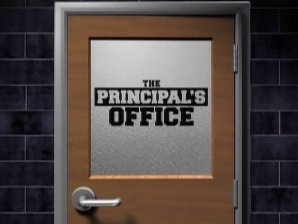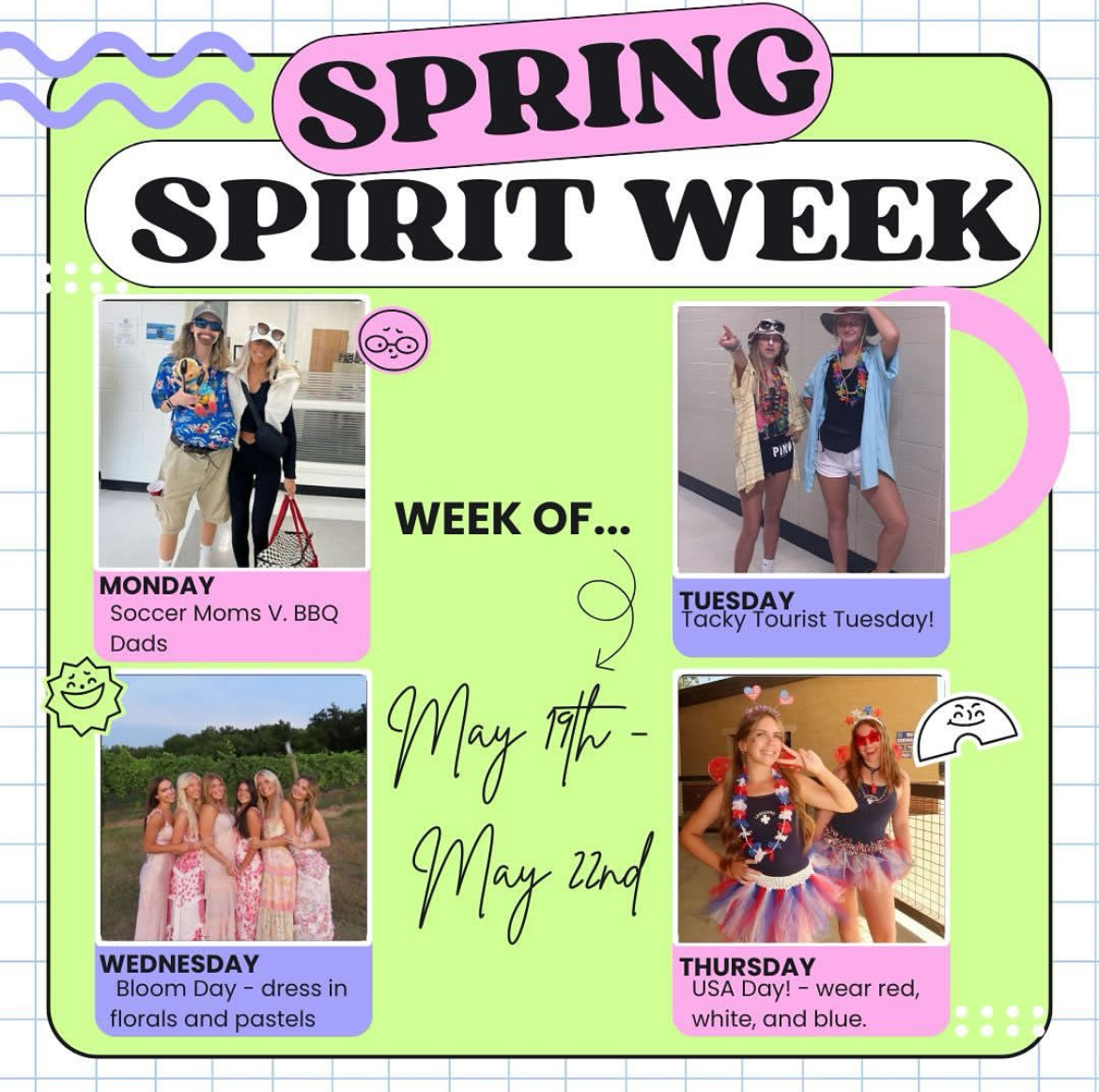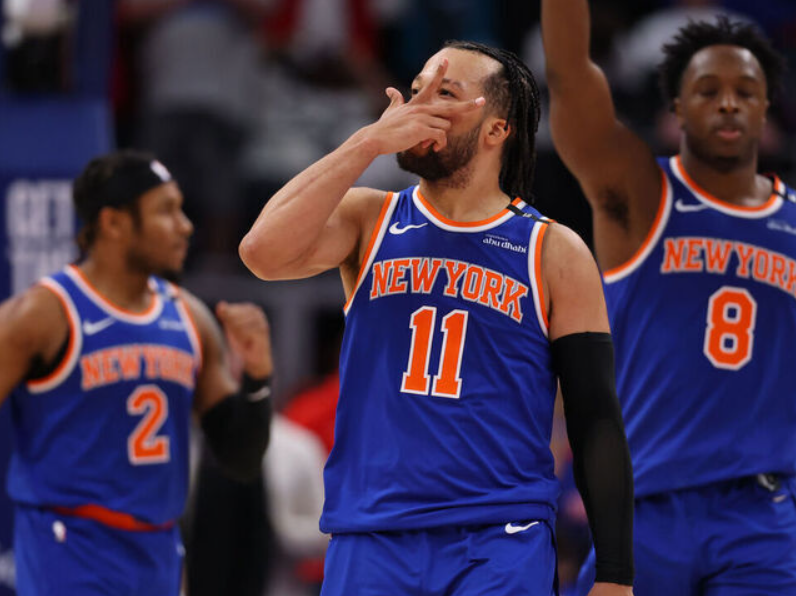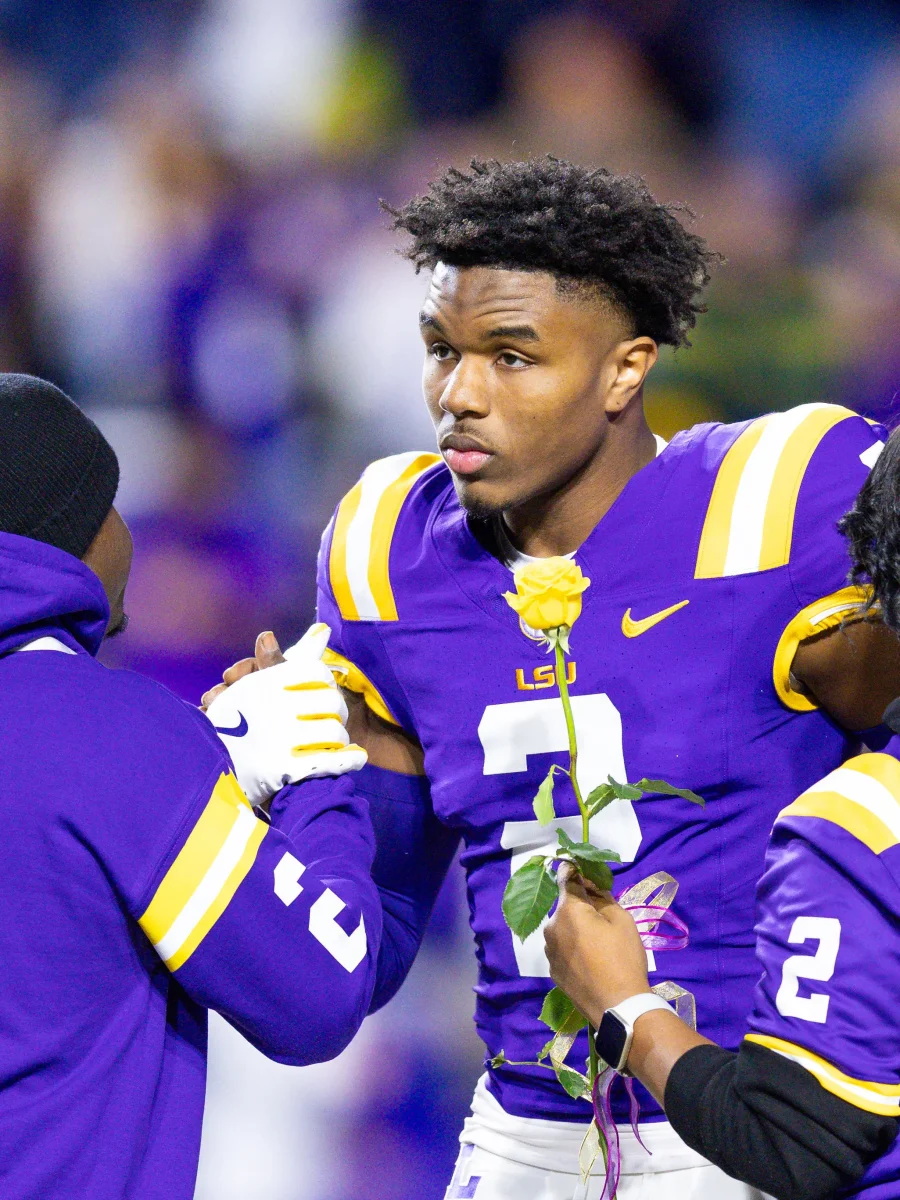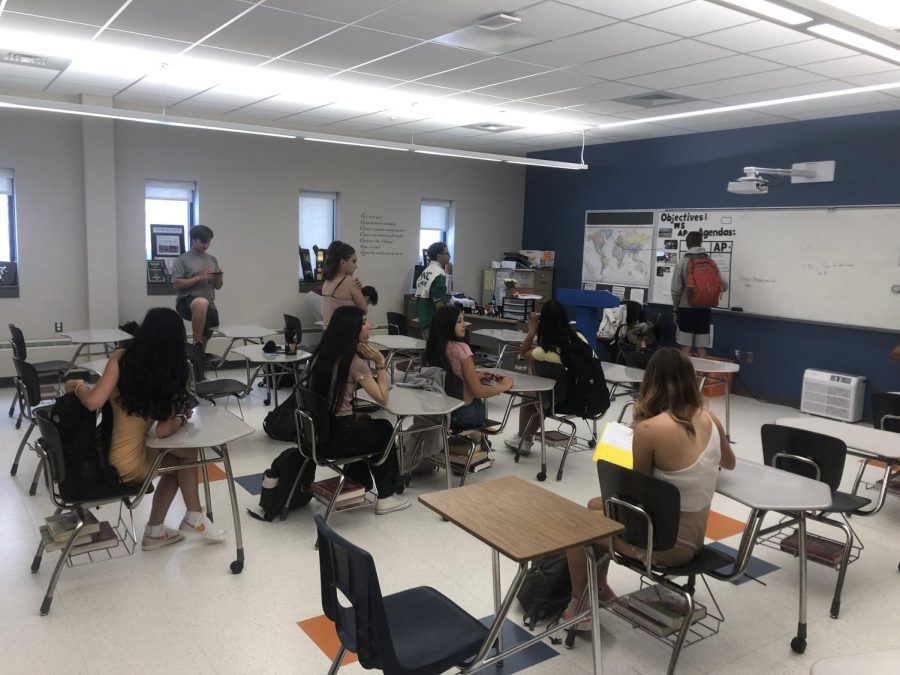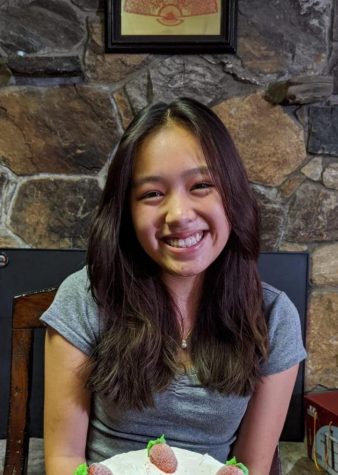Portrait of a Graduate Spotlight: Communication
May 27, 2022
Communication is the third pillar of the Portrait of a Graduate initiative.
Communication – Graduates communicate their own thoughts and emotions as well as effectively engage with the perspectives and feelings of others.
Communication is an essential skill in life that is needed in every facet of daily interactions and responsibilities. Effective communication is required not only in an academic and educational setting, but also social and professional later on in life. By having the skills to speak, read, and write for a variety of audiences, students will be successful in life due to their ability to inform, influence, motivate, or entertain. Such communication skills can be developed through the practice of active listening. Active listening allows for a widened understanding of others, and is a productive way to exchange thoughts and opinions respectfully.
Eric Jennette, English Teacher
“Students complete reflections at the conclusion of curricular units to assess their strength, weaknesses and overall progress on specific skills and content knowledge. They also provide feedback on specific likes and dislikes which inform pedagogical decisions.”
Stefanie Dube, Special Education Teacher
“I teach a self-contained program. My students are ALWAYS working self-regulation and coping skills. The ways we do this is by providing everyday opportunities to practice these skills. One major way we do this is when other teachers invite us into their classrooms. For example, the school store has allowed us to come in and not only practice vocational work but also to practice meeting and talking with others.”
Samantha Raup, World Languages Teacher
“I just used a “jigsaw” style notes activity that worked quite well. Students worked together to develop mastery and will be teaching their mastered concept to the rest of the class the next time they see each other.”
Danielle Costello, English Department Head
“I have shifted my teaching over the course of my career to less about grades and content, and more on skills. Having students re-do assignments, quizzes and tests to demonstrate that understand the skill. Through this, students understand the importance of learning, and realizing it is beyond a grade, but actually understanding how to do a skill, rather than doing well on a test.”
Jose Machado, AP Psychology
“At the heart of education is this opportunity to communicate with one another. It helps students to learn and grow from one another, to express ideas and most importantly revise ideas. The classroom allows for this type of communication to organically happen, bloominging into creative thought and a well rounded student.”
Rachel Cappello, English Teacher
‘The POG Pioneer Team has been undergoing professional development and collaborative planning over the course of the past few weeks. In striving to develop target learning experiences for students that reflect skill development parallel to their post-high school experience, this team of teachers have been looking to the Portrait of a Graduate continuum to determine what the trajectory of a student learner, communicator, collaborator, advocate, and innovator may be. In embracing this in my classroom, I have scaffolded a socratic seminar that not only afforded students the opportunity to expound upon their personal experiences and understanding of the world around them, but also to harken back to various texts that we have read throughout the course of English 2. What may typically start as more of a structured conversation with target questions, monitoring checklists and peer coaching transformed into an opportunity for students to engage with each other in a more naturally thought provoking discussion about human experience. Communication and collaboration are vital authentic interactions post-high school experience daily, so seeing them moving across our POG continuum by not only critically analyzing information, but also influencing the opinions of their peer audience was powerful. I hope that adopting these POG indicators and inviting students to reflect on their growth as future DHS graduates will allow all students to feel more empowered by sharing their intricate thoughts, authentic beliefs, and distinctive passions.”
Aylin Avila, Grade 9
“I use communication as class president because if other officers and I disagree on something, we have to be able to communicate to find compromise. In class, communication is important because class can be boring if nobody wants to speak.”
May Swinton, Grade 10
“I use communication to express myself and allow others to express themselves too. Communication also means being a good listener. In class, I ask people how they feel and try to encourage discussion. It’s also important that I feel safe communicating with my teacher.”
Anonymous, Grade 10
“Communication is extremely important in everyday life. It allows me to build relationships with my friends and teachers, and develops understanding between people. I use communication both in the classroom and outside. In the classroom, we often have to do group projects where communication is essential to succeed.”
Anonymous, Grade 10
“Through communication, I’m able to develop friendships with my peers. It allows me to communicate and learn about others, as well as discuss different opinions and thoughts. Communication can also be used to develop rapport and a relationship with teachers.”
Fabian Alonzo, Grade 11
“Without communication, you can’t interact with other people. Being bilingual, I see communication from two different perspectives. I know the struggle and know it’s important to be able to communicate what I need from my teachers.”
Thai-Ler Sestokas, Grade 12
“I use communication in school to learn about other people’s opinions. On the baseball field, I use communication with my team to make sure everyone is on the same page and everyone knows what their role is so that we can achieve our goal.”






